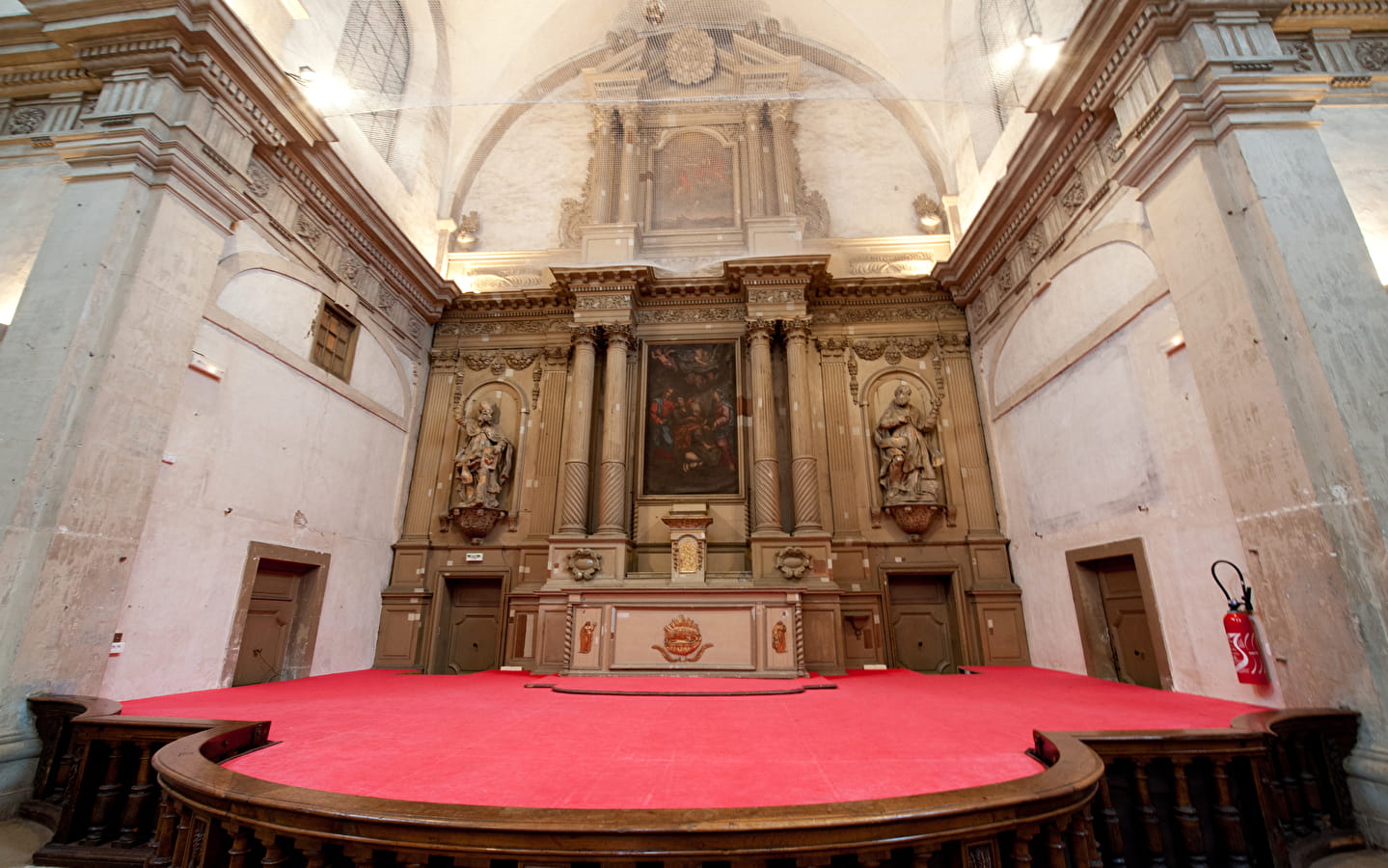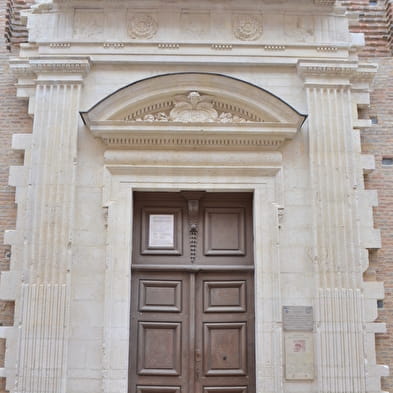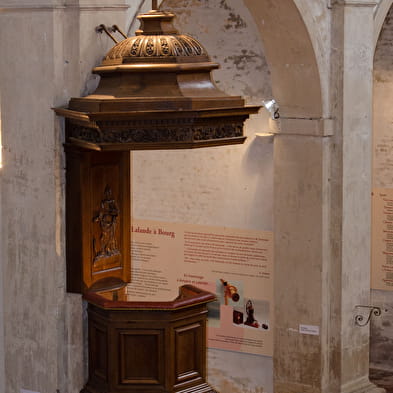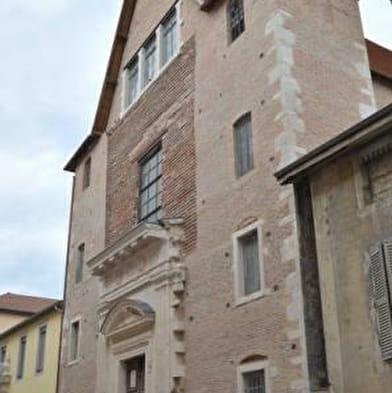
Chapelle des Jésuites
The symmetry of the building, the baroque altarpieces, the sculpted frieze and the exhibition on the history of the place make it an important historical and cultural site of the city.
The Jesuits have been present in Bourg-en-Bresse since 1612. The college was founded in 1649 (obtaining a royal patent) thanks to the testamentary donation of Louise de Monspey, baroness of Seyturier and La Verjonnière (see plaque on the façade).
The portal is a good reminder that the chapel belongs to the 17th century: curvilinear pediment, fluted pilasters, entablature with frieze alternating triglyphs and sculpted metopes (hammered out during the Revolution). In the pediment, the Jesuit monogram: "IHS". The façade is unfinished: no stone facing, due to lack of money and time.
Work began in March 1670; the stone came from the Drom and Jasseron quarries. The work was completed in 1682.
The chapel is placed under the vocation of Saint Joseph. It is built on a rectangular plan. The nave is well lit, making it easier to preach and read the books of the Mass. A frieze runs along all the walls of the chapel. In Doric style, it alternates triglyphs and sculpted metopes reminiscent of the exterior portal.
The musicians' gallery (1682) faces the choir; its curved lines contrast with the rectilinear plan of the general architecture.
The pulpit, where an illustrious student of the college, Jérôme LALANDE (1732-1807), preached in his time.
The communion table completely closes the choir: its size should not be surprising as the Jesuits preached the Blessed Sacrament. Balusters sculpted with ears of wheat and bunches of grapes, Eucharistic symbols. Graffiti engraved in the wood, some very old (Roux 1780 / Buget 1790 / Paradis 1790).
The choir has a high altar, with an oak and walnut altarpiece, occupying the entire height of the chapel. It is covered with a greyish plaster, applied in the 19th century, which avoided an expensive restoration at the time and allowed the preservation of the paintings and gilding which are still underneath. Paintings = the death and ascension to heaven of St. Joseph.
Other altarpieces: "The Vision of the Storta" = St Ignatius of Loyola, founder of the Society of Jesus, is appointed by God to be the servant of his son on earth.
Oil on canvas dated 1681 and classified as a historical monument in 1979
"Saint François-Xavier healing the plague victims" = this work exalts the efforts of the Jesuit Fathers during the plague epidemics of the 17th century, which did not spare Bourg-en-Bresse. Oil on canvas - Last quarter of the 17th century - Classified as a historic monument in 1979
The sacristy is spacious and luminous; it is equipped with a large walnut chasublier from the end of the 17th century.
- French
- Pets not allowed
- Parking
- Room rental
- Temporary exhibitions
From 01/01/2025 to 31/12/2025









